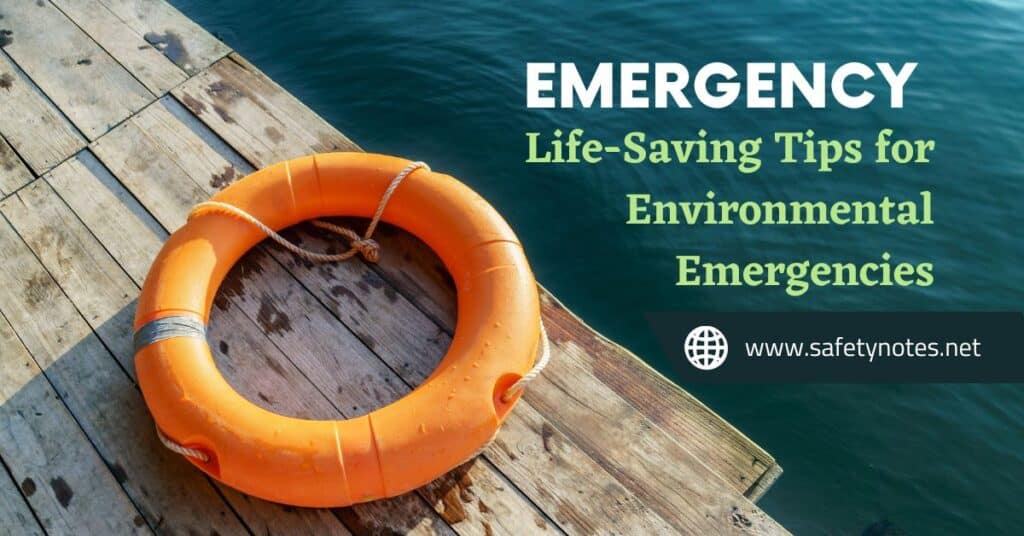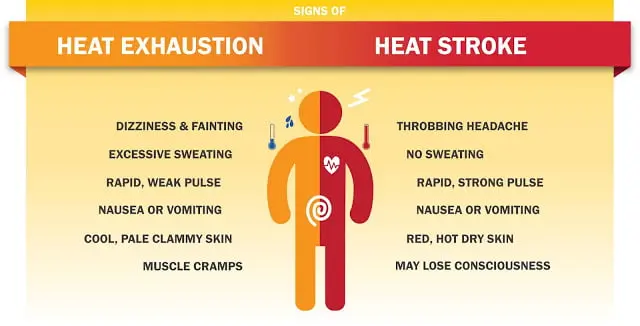
Introduction to Environmental Emergencies
Environmental emergencies refer to unforeseen situations caused by natural or manmade events, resulting in significant harm or risk to the health of the environment and the public. While it’s true that such events like earthquakes, floods, or chemical spills are not entirely preventable, measures can be taken to minimize their impact on communities and the environment. Ensuring a level of preparedness can drastically reduce the severity of emergencies when they do occur.
Understanding Environmental Emergencies and Their Impact
Environmental emergencies encompass a broad range of events with varying scales of impact:
Natural Disasters: This includes earthquakes, hurricanes, floods, wildfires, and tsunamis, which are largely unpredictable and may result in significant damage to infrastructure, ecosystem disruption, and loss of life.
Technological and Industrial Accidents: Chemical spills, nuclear accidents, and oil leaks represent examples of emergencies stemming from human activities that can lead to environmental contamination and health risks.
Public Health Emergencies: Outbreaks of diseases, pandemics, and bioterrorism events are also classified as environmental emergencies due to their direct effect on the well-being of the population and natural systems.
The aftermath of these emergencies often produces further complications, such as population displacement, economic downturns, and resource scarcity, which can exacerbate the initial disaster.
The Importance of Preparedness and Prevention
Risk Identification: The initial step for effective emergency preparedness is acknowledging potential risks that are specific to your local area or work environment.
Training and Education: Adequate preparation involves educating the public and employees on emergency protocols, which includes everything from evacuation plans to understanding how to administer basic first aid.
Safety Measures Installation: Installing early warning systems, creating buffer zones around industrial areas, and reinforcing infrastructure can significantly mitigate the impact of disasters.
Emergency Kits and Supplies: Maintaining a stock of emergency supplies, such as food, water, medical kits, and survival tools, is crucial for coping during the after-effects of a disaster when accessibility to services might be limited.
Communication Plans: Having clear and efficient communication channels to disseminate information during an emergency is essential for the safety and coordination of all individuals involved.
In conclusion, while environmental emergencies pose a significant threat, through thorough planning, education, and the implementation of safety measures, the risks and impacts associated with these distressing events can be substantially reduced. Therefore, developing an emergency preparedness plan is not just a recommendation, but a necessity for safeguarding our environment and the lives that depend on it.
Recognizing Environmental Hazards
Preparing for environmental emergencies involves a systematic approach to recognizing potential hazards. Understanding the risks associated with your environment allows you to create a comprehensive plan to mitigate them. The objective is to ensure the safety of individuals and to minimize the impact of disasters when they do occur.
Identifying Potential Environmental Risks
Understand Your Geography: The first step in identifying potential environmental risks is to understand the geography of the area you live in or are traveling to. Different regions have different hazards, such as earthquakes in seismic zones or hurricanes in coastal areas.
Stay Informed About Weather Conditions: Regularly checking weather forecasts can help anticipate natural events that could lead to emergencies, such as heavy rain leading to flooding or drought leading to wildfires.
Know Local Industry Hazards: Be aware of any local industries that might pose risks, like chemical plants which could release toxic substances.
Recognize Signs of Environmental Distress: Learn the signs of environmental distress, such as dead wildlife or unusual plant die-offs, which might indicate a pending disaster.
Use Technology: Leverage apps and online resources that provide alerts or updates on environmental conditions and hazards in your area.
How to Assess Your Surroundings for Safety
Regular Inspections: Make regular inspections of your home and surroundings for structural damage or potential dangers, such as weakened trees or eroded ground near foundations.
Have an Evacuation Plan: Know the escape routes from your home and city in case of an urgent evacuation. Ensure all family members are familiar with these plans.
Community Resources: Identify and locate community resources such as shelters, hospitals, and police stations.
Emergency Kits: Keep well-stocked emergency kits with supplies such as water, food, medications, and first-aid materials tailored to specific types of environmental emergencies.
Training and Drills: Participate in training and drills for different scenarios to ensure everyone knows what to do. This includes first aid training and practicing emergency communication.
By taking these steps to identify potential environmental risks and assessing your surroundings for safety, you’ll be in a better position to protect yourself and those around you in the event of an environmental emergency. While it’s impossible to predict every scenario, preparation can significantly reduce the impact of such events and speed up the recovery process.
Emergency Planning and Kits
Developing an emergency plan and having a well-prepared emergency kit are essential steps in preparing for environmental emergencies. By being proactive, you can ensure that you and your loved ones have a greater chance of staying safe during unforeseen events. The plan should be detailed, taking into account different types of disasters and appropriate response strategies, while the kit should be packed with essential items tailored to meet basic needs in times of crisis.
Creating an Effective Environmental Emergency Plan
Collaborate with Local Authorities: Use the information provided by local emergency management offices to understand the most common environmental risks in your area and the standard procedures for dealing with them.
Detail Evacuation Routes and Meeting Points: Ensure that everyone knows the fastest and safest ways out of your neighborhood. Establish a familiar meeting point in case you must evacuate separately.
Assign Responsibilities: Each family member should have specific tasks during an emergency, such as turning off utilities, grabbing the emergency kit, or taking charge of pets.
Secure Your Home: Tips on how to make your home more resistant to environmental hazards should be included in your plan. This might involve installing storm shutters or securing heavy furniture.
Stay Connected: Have a list of important contacts, including family members, doctors, and local emergency services. Also, determine how you will communicate if cell phone networks are down.
Make Copies of Important Documents: Keep paper copies and digital copies (in a secure cloud service) of important documents like birth certificates, passports, and insurance policies.
Review and Update: Review your plan every six months, making any necessary changes as your family or living situation evolves or as new information becomes available.
Essential Items for Your Emergency Kit
Water: At least one gallon of water per person per day for several days, for both drinking and sanitation.
Non-perishable Food: A supply that can last at least three days, with consideration for dietary restrictions and allergies.
Battery-Powered or Hand Crank Radio: To receive weather alerts and information when other communication modes fail.
Flashlights and Extra Batteries: For navigating in the dark if the power goes out.
First Aid Kit: Include personal medications, prescribed medical supplies, and basic first aid items.
Multi-Tool or Swiss Army Knife: Versatile and compact, these tools can prove invaluable in a variety of situations.
Sanitation Supplies: Hand sanitizer, moist towelettes, garbage bags, and plastic ties for personal sanitation.
Clothing and Bedding: Pack extra clothing for various weather conditions and emergencies blankets for warmth.
Local Maps: Physical maps can be a crucial resource if GPS services are unavailable.
Cash: ATMs and credit card machines may not be operational, so keep a small amount of cash on hand.
By thoroughly addressing these aspects of your emergency preparedness plan and carefully selecting items for your emergency kit, you place yourself in a proactive state of readiness. Preparing may seem daunting, but by breaking down tasks into these digestible steps, you can systematically address each area and instill peace of mind.
First Aid Basics for Environmental Emergencies
Key First Aid Skills for Outdoor Incidents
Staying Calm and Assessing the Situation: In any emergency, it’s crucial to remain calm to make informed decisions. Assess the severity of the situation and whether it’s safe to stay or necessary to move to a safer location.
Calling for Help: Know how to alert emergency services quickly, giving them clear information about your location and the nature of the emergency.
ABCs of First Aid: Prioritize the Airway, Breathing, and Circulation of anyone injured. Ensure they are breathing and address any life-threatening conditions immediately.
Protection from the Elements: In cases of extreme weather, ensure that both you and the injured are protected from the environment to prevent conditions like hypothermia or heatstroke.
Treating Wounds: Be able to manage wounds by cleaning them and applying dressings to prevent infection, and control bleeding if necessary.
Immobilizing Injuries: Know how to immobilize broken bones or sprains to prevent further injury while awaiting medical assistance.
Recognizing Signs of Distress: Be vigilant about signs of shock or severe distress in injured individuals, which can indicate internal injuries or serious conditions.
Managing Common Environmental Injuries
Heat-Related Illnesses: Know how to identify and treat heatstroke and heat exhaustion by moving the person to a cooler place, applying cold compresses, and giving sips of water if they’re conscious.
Cold Injuries: For frostbite and hypothermia, warm the person gradually; never use direct heat. Protect the frostbitten area and seek emergency medical care.
Bites and Stings: For animal or insect bites, remain calm and remove the stinger if present. Apply a cold pack to reduce swelling and watch for signs of an allergic reaction.
Poisonous Plants: Learn to identify and avoid poisonous plants. If contact occurs, wash the area thoroughly and watch for any signs of an allergic reaction.
Water Safety: Always respect water bodies and understand the risk of drowning. Ensure you can perform basic water rescues and CPR if necessary.
Understanding and practicing these first aid basics can greatly increase one’s ability to manage accidents and health issues due to environmental risks. These measures are not exhaustive but serve as a foundation for responding effectively to environmental emergencies. It’s important to seek out formal first aid training to be fully prepared and to keep these skills sharp through regular review and practice.
Heat-Related Emergencies
Preventing and Treating Heat Stroke and Exhaustion

Understanding Heat-Related Emergencies: Distinguish between heat exhaustion and heat stroke as they have different levels of severity. Heat exhaustion may involve heavy sweating, weakness, and cold, pale skin. Heat stroke is more serious and includes high body temperature, the absence of sweating, hot red or flushed dry skin, and rapid pulse.
Hydration: Keep yourself and others well-hydrated, especially in hot weather or when exerting physically. Encourage drinking water regularly even if not thirsty.
Dress Appropriately: Wear lightweight, loose-fitting, and light-colored clothing that allows your body to breathe and cool down efficiently.
Regular Breaks: Take breaks in the shade or indoors with air-conditioning, particularly during the hottest parts of the day.
Use of Cooling Aids: Utilize cooling aids such as fans, wet towels, or cooling vests. Ice packs can be applied to the body’s core areas like the neck, armpits, and groin to lower body temperature.
Immediate Treatment: If someone is showing signs of heat-related illness, move them to a cooler place immediately. Remove any excess clothing and cool the person down with whatever means available.
Recognizing Symptoms and Responding to Heat Emergencies
Early Detection: Learn to recognize the early signs of heat exhaustion: fatigue, dizziness, muscle cramps, headaches, and fainting. Responding to these early signs can prevent the progression to heat stroke.
Monitoring Vulnerable Individuals: Special attention should be given to the elderly, children, and those with health conditions, as they are more susceptible to heat-related illnesses.
No Delay in Response: In the event of a heat stroke, characterized by a lack of sweating, mental confusion, and loss of consciousness, call for emergency medical help immediately.
Cooling Strategies: While waiting for help, use aggressive cooling strategies. Immersing the person in a cool bath or applying wet towels can significantly help in reducing body temperature.
Avoiding Alcohol and Caffeine: Educate individuals on avoiding beverages that can dehydrate the body, such as those containing alcohol or caffeine.
Adjust Activities: Modify or cancel outdoor activities when the temperature soars to avoid prolonged exposure to heat.
By recognizing the symptoms and understanding the treatment of heat-related illnesses, one can mitigate the dangers posed by extreme temperatures. Active prevention and a responsive attitude are crucial in handling heat-related emergencies effectively. Remember, if you are unsure about a person’s condition or if symptoms worsen, seek immediate medical attention.
Cold-Related Emergencies
Preparation for Cold Weather Hazards
Understanding Risks: Educate yourself about the signs, symptoms, and risks associated with cold weather, such as frostbite and hypothermia.
Proper Attire: Always dress in layers when heading out in cold conditions; wear wool or synthetic fibers that provide insulation even when wet.
Emergency Kits: Pack emergency kits with thermal blankets, warm clothing, and hot packs when traveling in cold environments.
Stay Informed: Keep an eye on weather forecasts and be aware of incoming cold fronts or severe weather warnings.
Communication Plans: Have a reliable way to communicate, such as a charged cellphone in a watertight container, in case you need to contact emergency services.
Shelter Knowledge: Know how to find or create an emergency shelter to retain heat and protect from the elements if stranded.
First Aid for Frostbite and Hypothermia

Early Recognition: Learn to recognize the early signs of frostbite (numbness, white or grayish-yellow skin) and hypothermia (shivering, exhaustion, confusion).
Gentle Handling: Handle frostbitten areas gently; do not rub or apply direct heat as this can cause more damage.
Gradual Warming: Warm hypothermic individuals slowly by removing wet clothing, wrapping in blankets, and providing warm (not hot) drinks if they are conscious.
Never Ignore Shivering: Shivering is the body’s way of generating heat. If someone can’t stop shivering, take it as a serious sign of hypothermia.
Keep the Body Horizontal: If hypothermia is suspected, keep the person horizontal and still to maintain blood flow and prevent cardiac arrest.
Dry and Insulate: Get the person into warm, dry clothing and use whatever is available—blankets, sleeping bags, towels—to insulate them from the cold ground and air.
Professional Assessment Required: Anyone who has been through a cold-related emergency should be seen by a medical professional, even if they seem to have recovered.
Understanding and mitigating the risks of cold environments can save lives. Whether it’s proper planning, dressing appropriately, or knowing how to administer first aid, each step is vital for survival. Always remember that cold-related emergencies require immediate attention, and the ultimate goal is to prevent long-term injury and facilitate rescue. Even after successful first aid administration, professional medical evaluation is crucial due to the potential for hidden or delayed injuries associated with cold exposure.
Water Safety in Emergencies
Safe Practices Around Water Bodies
Supervision is Key: Always ensure that there is constant, focused adult supervision when children are in or around water.
Swimming Skills: Learning to swim is a fundamental safety skill for all ages, but it is especially important for those living near water bodies.
Safety Gear: Use proper safety gear such as life jackets or flotation devices, and ensure they are U.S. Coast Guard-approved for boating and other water activities.
Environmental Awareness: Be aware of the local environment and potential dangers, like rip currents, underwater hazards, or wildlife.
Avoid Alcohol: Alcohol impairs judgment and swimming ability; avoid it when supervising children or when planning to swim or boat.
Safe Boating: Follow safe boating practices. This includes checking weather conditions, keeping communication devices handy, and ensuring the boat is in good condition.
Emergency Training: CPR and water rescue skills can be invaluable in emergencies. Take courses to become proficient in these life-saving techniques.
Dealing with Water-Related Injuries and Drowning Prevention

Immediate Response: In drowning situations, immediate action is crucial. Remove the person from water as quickly and as safely as possible.
Check for Breathing: Once the person is out of the water, check for breathing and pulse and commence rescue breathing or CPR if necessary.
Avoid Delay: Do not delay in seeking medical attention as water-related injuries can have delayed symptoms, particularly in the case of near-drowning.
Prevent Hypothermia: After rescuing someone from the water, keep them warm to prevent hypothermia, which can set in quickly even if they are not noticeably cold.
Use the Buddy System: Never swim alone. Use the buddy system to ensure that someone is always alert and available to call for help if needed.
Water safety is an essential consideration for everyone, whether involved in recreational activities or caught in a natural disaster. Knowing how to act around water, wearing the proper equipment, and being able to respond in an emergency are all keys to preventing water-related emergencies and injuries. Drowning can happen swiftly and silently, making active and informed supervision and preparedness your greatest tools in ensuring the safety and well-being of everyone in aquatic environments. Whether it’s by learning lifesaving skills, swimming, or understanding the local environment, you must be proactive to keep yourself and others safe in water-related situations.
Wildlife Encounters and Injuries
What to Do in Case of Dangerous Wildlife Interactions
Stay Calm: If you encounter potentially dangerous wildlife, remain calm and avoid making sudden movements that could be perceived as a threat.
Keep Distance: Always keep a safe distance from wild animals. If an animal approaches, back away slowly without turning your back to it.
Avoid Feeding: Never feed wildlife. Feeding can provoke aggressive behavior and alter the natural behavior of animals, making them a danger to others.
Use Deterrents: Carry deterrents like bear sprays when hiking in areas where encounters with bears or other large predators are possible.
Stay Noisy: In bear country, make noise to prevent surprise encounters. Clap, sing, or talk loudly, especially near streams and in dense vegetation.
Secure Food: When camping, secure your food and scented items to avoid attracting wildlife to your camp.
First Aid for Animal Bites and Stings
Immediate Cleansing: Wash animal bites immediately with soap and water to reduce the risk of infection.
Control Bleeding: Apply pressure to the wound with a clean cloth to control any excessive bleeding.
Monitor for Symptoms: Watch for signs of infection such as redness, swelling, increased pain, and fever following an animal bite.
Seek Medical Attention: For all animal bites, it is important to seek professional medical help as soon as possible, particularly to assess the risk of rabies or other infections.
Administer Antihistamines: For stings from bees, wasps, or other insects, an antihistamine can help alleviate allergic reactions. Always follow the guidelines on the medication’s label.
Remove Stingers: If stung by a bee and the stinger remains in the skin, gently scrape the skin with a fingernail or credit card to remove it without squeezing the venom sac.
Cold Compresses: Apply a cold pack to bites and stings to reduce pain and swelling, wrapping the pack in a cloth to avoid direct skin contact.
Stay Still: If bitten or stung and feeling dizzy or having trouble breathing, lie down with the bite or sting site lower than the heart, and try to remain still to slow the spread of venom.
Be Prepared: Carry a first aid kit with you when exploring the outdoors, which should include basic supplies for treating bites and stings.
Navigating wildlife encounters safely is an important aspect of enjoying and respecting the wilderness. By understanding animal behavior and knowing basic first aid for bites and stings, individuals can better protect themselves and others from the risks associated with wildlife. Proactive measures and informed actions go a long way in preventing injury and ensuring a positive outdoor experience. Remember, if in doubt about the severity of a bite or sting, always err on the side of caution and seek professional medical support.
Conclusion
Summarizing Key Takeaways for Environmental Emergency Preparedness
Understand Local Risks: Familiarize yourself with the types of environmental disasters that are most likely to occur in your area, whether they are floods, hurricanes, earthquakes, or wildfires.
Create a Response Plan: Have a clear and practiced emergency response plan that includes evacuation routes, communication plans, and role assignments for family members or employees.
Assemble Emergency Kits: Prepare emergency kits with essential supplies, such as water, non-perishable food, first-aid materials, flashlights, and batteries, tailored to the needs of your household or workplace.
Stay Informed: Use technology and sign up for local alerts to receive real-time information on environmental hazards, and keep a battery-powered or hand-crank radio for updates during a disaster.
Secure Property: Take measures to secure your home or business premises, such as anchoring heavy furniture, reinforcing structures, and safeguarding hazardous materials.
Protect Important Documents: Protect critical documents in fireproof and waterproof containers and have digital backups as necessary.
Confirm Insurance Coverage: Review your insurance policies regularly to ensure adequate coverage for various environmental disasters.
Build Community Networks: Engage with your local community to create networks that can offer assistance and support during emergencies.
Educate Family and Employees: Regularly educate and train your family members or employees on emergency protocols and conduct drills to ensure everyone knows how to react.
Continual Learning and Adaptation for Environmental Safety
Participate in Training: Attend workshops and training sessions on environmental disaster response to stay current on best practices.
Take Part in Drills: Engage in community-wide disaster drills to practice emergency response and build familiarity with local emergency services.
Volunteer with Relief Organizations: Volunteer with local emergency response or disaster relief organizations to gain firsthand experience in disaster response.
Seek Professional Advice: Consult with emergency planning professionals to tailor your emergency preparedness plan to your specific needs and risks.
Learn From Past Incidents: Analyze past environmental disasters to understand what worked well in the response and what could be improved.
Incorporate Technology: Use technological advancements for monitoring environmental conditions and enhancing communication during emergencies.
Review and Revise Plans: Regularly review and update your emergency preparedness plans to reflect new insights, changing environments, and personal or organizational growth.
Promote Safety Culture: Foster a culture of safety where proactive measures and attention to environmental risks are part of everyday practice.
Share Knowledge: Share your knowledge and experience with others to help build wider community resilience to environmental disasters.
Understanding the importance of being prepared for environmental emergencies is critical. Adequate preparation not only helps mitigate the effects of disasters but also enhances the ability to recover swiftly. Continuous education, practice, and community engagement are significant to maintaining safety and resilience. This journey of preparedness is ongoing, with the adaptation and learning process playing vital roles in effectively managing environmental risks.


